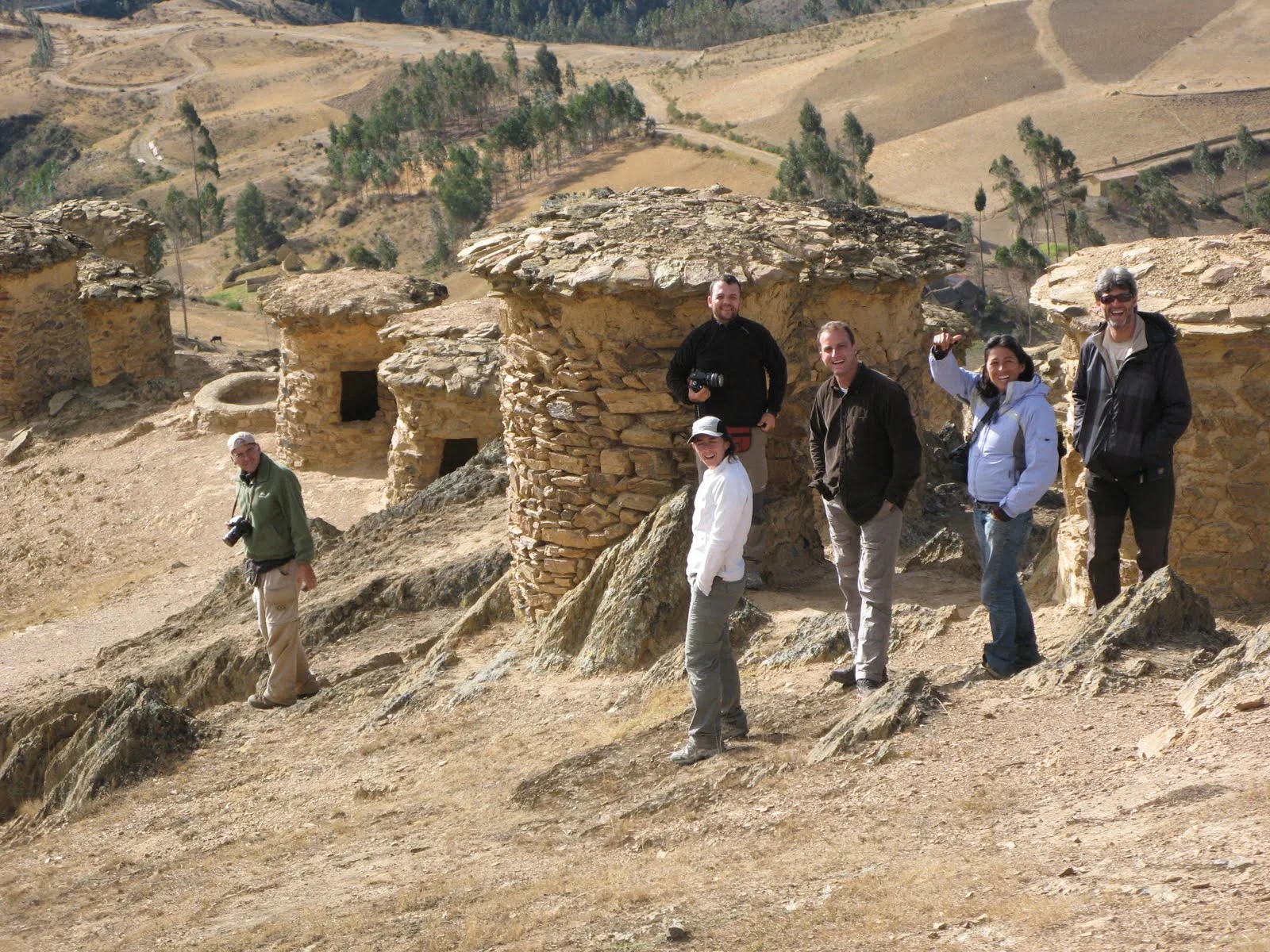The Chullpas of Ninamarca are ancient pre-Inca funerary towers located near the town of Paucartambo, in the Cusco region of Peru. Built by Andean cultures prior to the Incas, these cylindrical structures served to bury chiefs and important figures. They stand on a hill at about 3,600 meters above sea level, overlooking the Mapacho River Valley and offering panoramic views of the Andes. Their impressive presence has fascinated historians and travelers alike, making them a worthy stop on the way to Manu National Park.
These chullpas were built with irregular stones joined with clay, without fine finishing. They have a cylindrical shape with conical roofs, and a total of around 17 towers remain in good condition. Their heights range from 1 to 2.5 meters, and the entrances are usually oriented to the north. Each tower contains a funerary chamber where the deceased was placed in a fetal position, along with offerings such as pottery, textiles, and food. For the ancient inhabitants, these chullpas were sacred places linked to ancestor worship. The name “Ninamarca” comes from the Quechua nina (“fire”) and marka (“village”), suggesting fire ceremonies or a mystical character to the site.
History and origin of the Chullpas of Ninamarca in Paucartambo
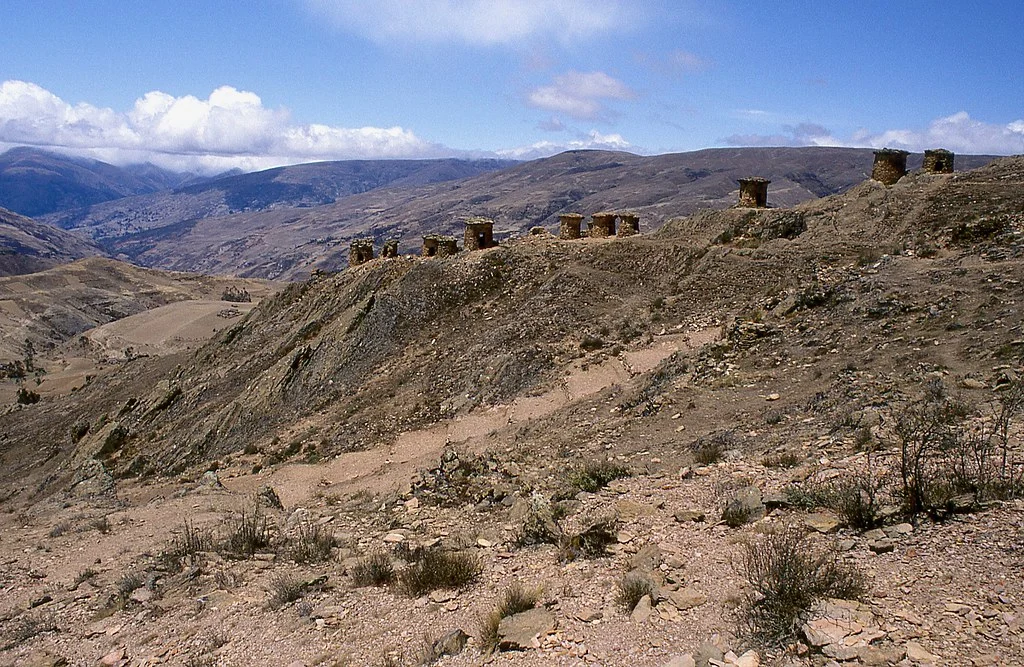
Origin and function of the funerary towers
The Chullpas of Ninamarca date back to a time before the Inca Empire. These towers were built by the Lupaca culture, an Andean ethnic group connected to the Lake Titicaca area. Influence from the Killke culture is also mentioned, but the dominant tradition attributes their construction to the Lupacas. Their purpose was to bury local leaders with offerings to accompany them on their journey to the afterlife.
Cultural significance and Andean symbolism
In the Andean worldview, death was part of a sacred cycle. The chullpas were funerary altars where ceremonies were held, and it was believed that the dead protected the living. The fetal position symbolized rebirth, and the valuable objects served as provisions for the spiritual journey. Their elevated location connected the earthly world with the heavens.
Peoples who built the chullpas
The Lupacas were the main builders, a pre-Inca highland people who flourished between the 13th and 15th centuries. There was also influence from the pre-Inca Killkes of Cusco. Ninamarca is therefore a pre-Inca cultural legacy.
Comparison with other chullpas in Peru and Bolivia
Ninamarca is part of the wider Andean chullpa tradition, though on a smaller scale than other necropolises. In Puno, for example, the Sillustani complex stands out, located on the shores of Lake Umayo, with nearly 90 pre-Inca funerary towers. The tallest chullpa in Sillustani, known as the “Lizard Tower,” reaches 12 meters in height, in contrast to Ninamarca’s more modest ones, which measure between 2 and 3 meters.
In Bolivia, similar constructions exist, such as the Tolerani chullpas (Aroma, La Paz), which have a square base of 3 × 3 meters, stand 4 meters high, and are made of adobe, with triangular doors facing east.
Unlike these taller and more elaborate monuments, the Chullpas of Ninamarca feature a simpler and rougher architecture, suggesting social or chronological differences between the cultures that built them.
Location and How to Get to the Chullpas of Ninamarca
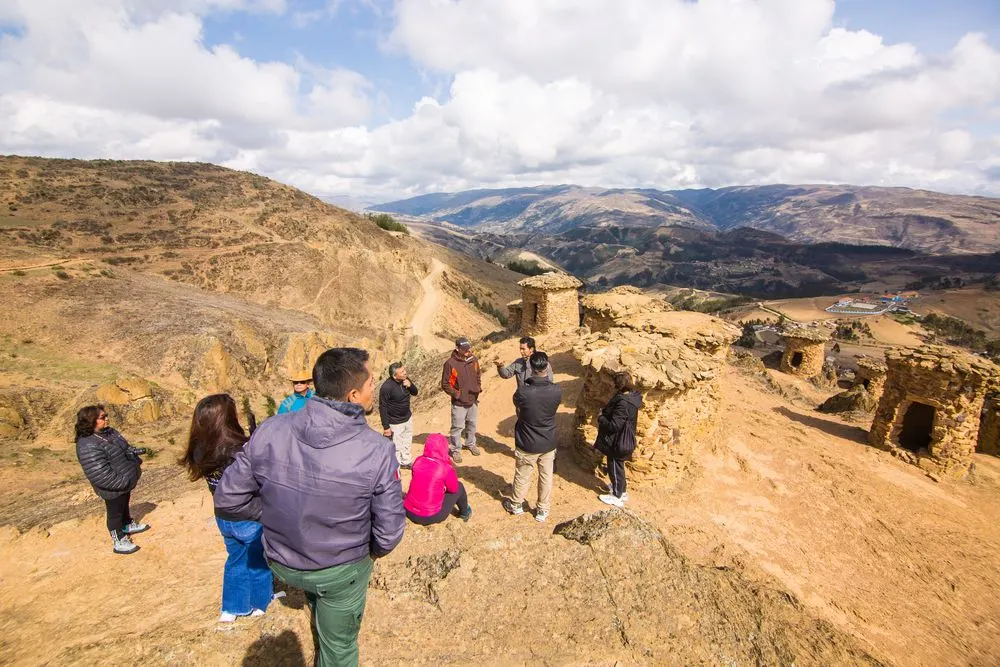
Direct route from Cusco
From Cusco, take the road to Paucartambo, passing through Huancarani and ascending to Ninamarca. The journey takes about 3 hours by car. From the turnoff, there is a short walk to the archaeological site.
Stop on tours to Manu National Park
The Chullpas of Ninamarca are often a classic stop on tours to Manu. Leaving the city of Cusco, travelers ascend to this funerary promontory before continuing toward the high jungle. In some itineraries, such as multi-day full tours, the visit to the “Chullpas of Ninamarca” is presented as the first cultural stop before reaching Paucartambo.
After Ninamarca, the route continues to the Ajanaco checkpoint (3,550 m / 11,647 ft), the gateway to the protected area, and then begins the descent into the cloud forest. In short, Ninamarca connects the Andean and Amazonian experiences in a single trip.
Tours to Manu National Park with stops at the Chullpas of Ninamarca
- Manu National Park (2 days)
- Manu National Park Tour (3 Days)
- Manu Jungle Tour (4 Days)
- Manu National Reserve (5 Days)
Public and Private Transportation
You can get there by buses to Paucartambo, asking to be dropped at the turnoff. It is also possible to hire a private taxi. The final access is via a dirt road.
Location Map and Altitude
The Chullpas of Ninamarca are located at kilometer 83 on the Cusco–Paucartambo road, within the community of Ninamarca, in the district of Colquepata (province of Paucartambo). Their altitude is approximately 3,600 meters (11,811 ft) above sea level.
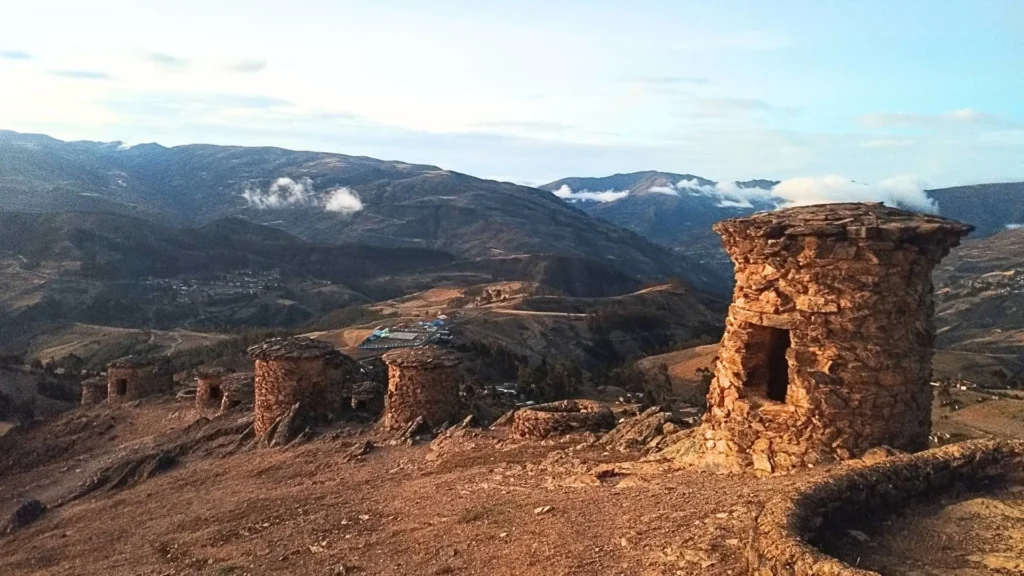
Architecture of the Chullpas of Ninamarca
The Chullpas of Ninamarca have a simple and functional architecture. Each tower is built with vertical walls of irregular stone, stacked one on top of another and joined with mud mortar. There are no auxiliary buildings or elaborate ornaments.
Most towers are cylindrical, although some have a rectangular base, all with slightly conical roofs that extend outward like eaves. These simple geometric forms reflect techniques inherited from ancient Andean funerary traditions. Some chullpas are internally divided into two superimposed chambers, suggesting multiple family burials.
Overall, the construction style of Ninamarca resembles altiplano chullpa architecture: dry stone joined with mud, without the precision of Inca masonry. Unlike the imposing polychrome adobe chullpas found in other regions, here everything remains unpainted and undecorated, creating a rustic ensemble integrated with the landscape, where towers just a few meters high seem like stone guardians on the mountain. These features reflect the pre-Inca cultural influence of the Lupaca builders, very different from the Inca school or later styles.
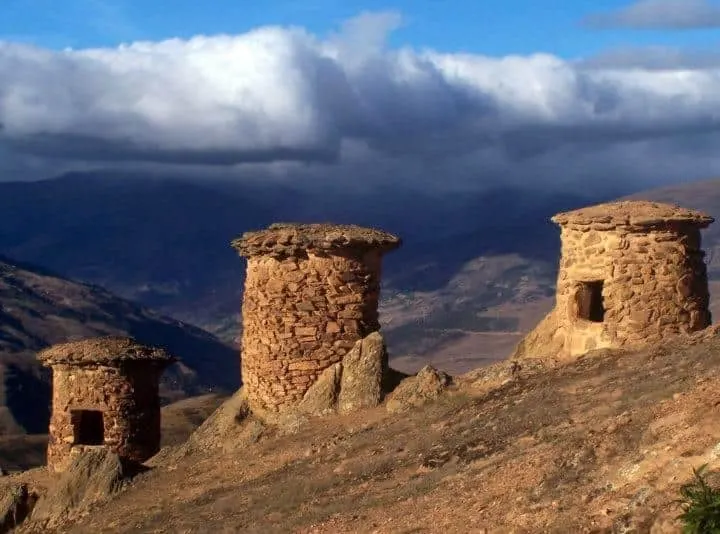
Ninamarca on the route to Manu
The Chullpas of Ninamarca are more than just an archaeological site: they mark the transition from the highlands to the jungle. For many travelers, this is the first cultural stop before entering Manu. From their 3,600-meter (11,811 ft) altitude, you can clearly see the change in vegetation, anticipating the descent into the cloud forest.
They are also close to the picturesque town of Paucartambo, famous for the Virgin of Carmen festival, making it possible to combine both visits. Their strategic location makes them an ideal stop, where the tranquility of the towers and the mountain views prepare the spirit for the Amazon adventure.
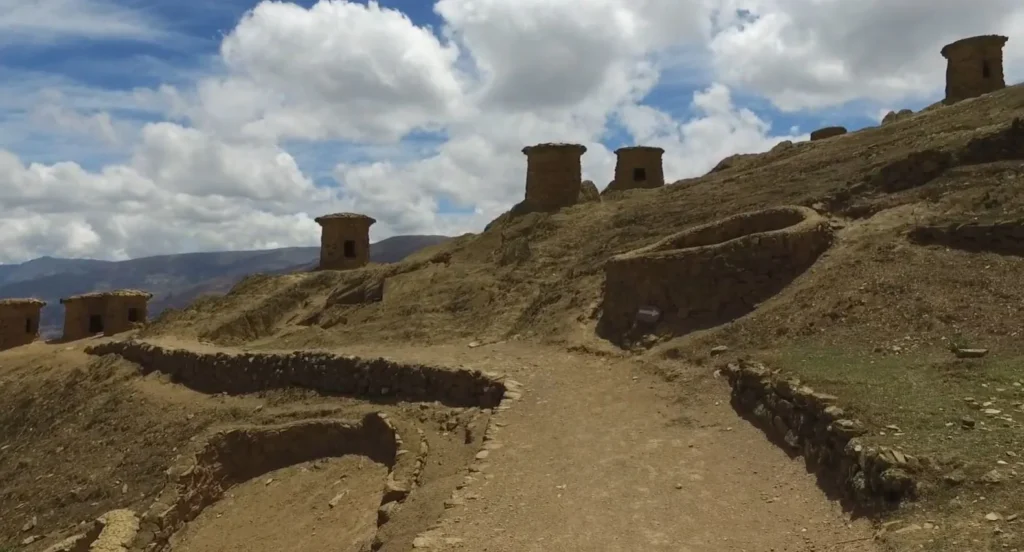
Mysteries and Legends about the Chullpas of Ninamarca
There are no written chronicles or inscriptions revealing their exact origin, which fuels an air of mystery around the chullpas. The very name Ninamarca, interpreted as “village of fire” (nina = fire, marka = village), suggests ancient rituals lost in memory.
Among local residents, stories circulate about lunar ceremonies and possible spiritual guardians said to inhabit the chullpas, though no official records support these claims. Some visitors claim to feel a special atmosphere when walking among the towers at dawn.
Overall, the mystery of Ninamarca is similar to that of other archaeological sites: its true secrets can only be guessed through archaeological research and respect for the region’s oral traditions.
Guide to Visiting the Chullpas of Ninamarca
- Best time to visit: Between May and October, dry season, with clear skies.
- Tips: Acclimatize to the altitude in Cusco, bring water and warm clothing.
- What to bring: Hiking boots, jacket, hat, gloves, sunscreen, sunglasses, snacks, and a camera.
- Precautions: Avoid intense physical exertion upon arrival, respect the structures, and in the rainy season, beware of slippery paths.
Frequently Asked Questions about the Chullpas of Ninamarca
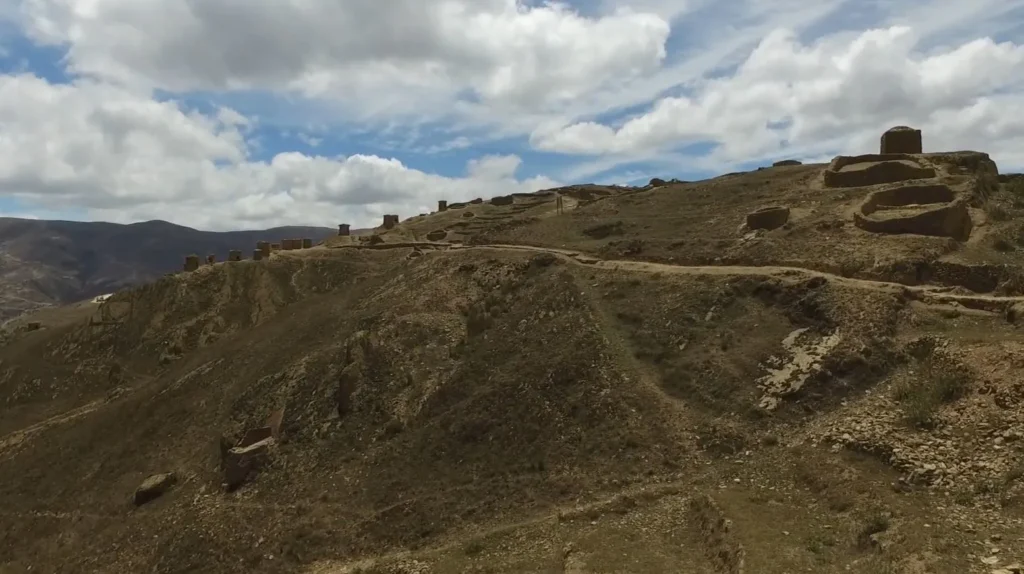
1. Where are the Chullpas of Ninamarca located and at what altitude?
The chullpas are located at kilometer 83 of the Cusco–Paucartambo road, in the community of Ninamarca, Colquepata district (province of Paucartambo). They sit at around 3,600 meters (11,811 ft) above sea level, which means cold weather and thin air. In the mornings, the sky is often very clear, but the temperature drops significantly until the sun rises.
2. What is the architecture of the chullpas like?
They are simple and functional funerary towers, made of irregular stones bound with mud mortar. Most are cylindrical and some rectangular, all with slightly projecting conical roofs, like an overhang. They have no decorations or surrounding structures. Some are internally divided into two levels, used for family burials. The style is rustic, reminiscent of altiplano constructions, but without the precision of Inca architecture.
3. How are they different from other chullpas in Peru and Bolivia?
The Ninamarca chullpas are smaller and simpler. For example, in Sillustani (Puno), there are towers reaching 12 meters (39 ft) in height, while those in Ninamarca measure between 2 and 3 meters (6–10 ft). In Bolivia, the Tolerani chullpas reach 4 meters (13 ft) and are made of adobe, with triangular doorways. The Ninamarca chullpas, however, use stone, are unpainted, and have a more modest design.
4. Are they part of tours to Manu National Park?
Yes. Many trips to Manu National Park make their first cultural stop at Ninamarca. From Cusco, visitors climb to this site before continuing to Paucartambo and then reaching the Ajanaco checkpoint (3,550 m / 11,646 ft), the gateway to the protected area. From there, the descent into the cloud forest begins. This visit connects the Andean and Amazonian experiences in a single journey.
5. What is the origin and mystery of these chullpas?
There are no ancient writings explaining when and by whom they were built. The name Ninamarca means “village of fire”, which has inspired ideas of ancient, lost rituals. Local residents tell stories of moonlit ceremonies and spiritual guardians, though there is no official evidence. Some visitors report feeling a special energy when walking among them at dawn. Their secrets can only be partially revealed through archaeological studies and respect for local oral traditions.

Visiting the Chullpas of Ninamarca means immersing yourself in Andean history and spirituality. Their beauty, mystery, and connection to the past make them a unique experience. Also, being on the route to Manu, they are a must-stop for travelers seeking a journey that blends culture and nature.
If you’re traveling to Manu, Peru Jungle Trips offers tours starting with this visit, ensuring a complete and enriching experience. Contact us and book your Manu adventure with a stop at the Chullpas of Ninamarca.

